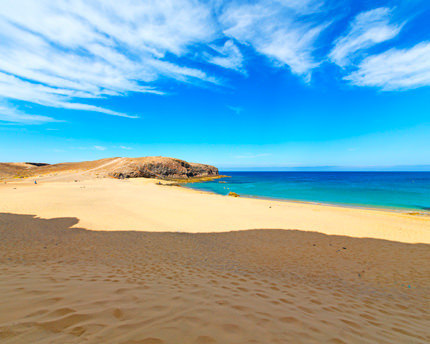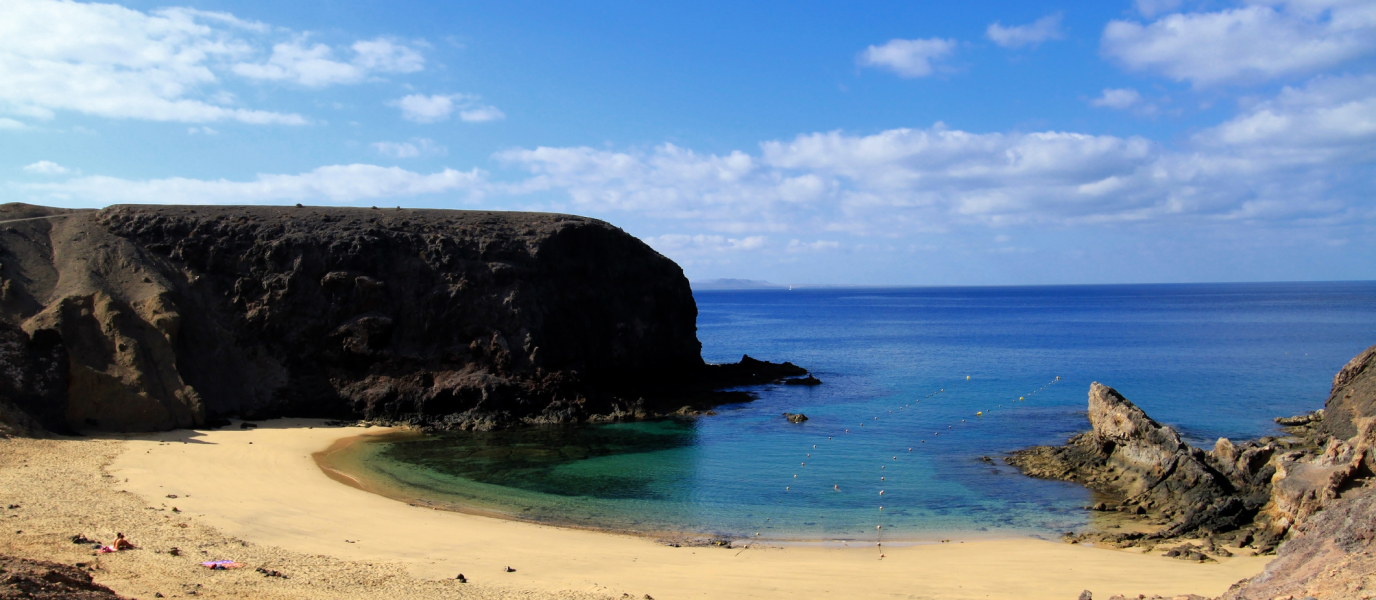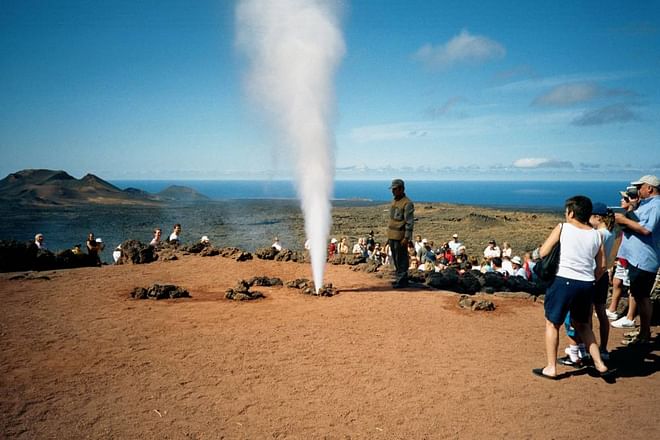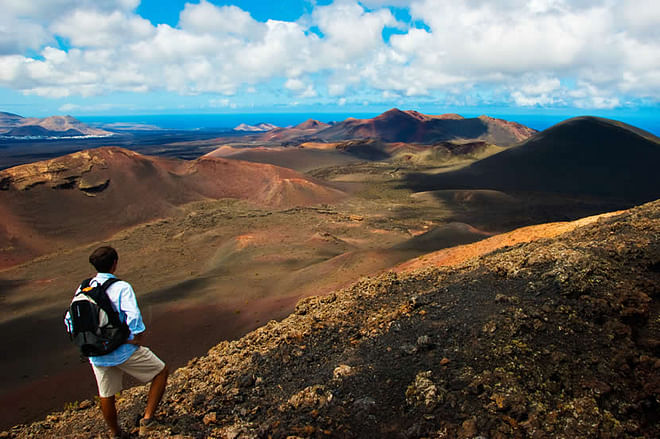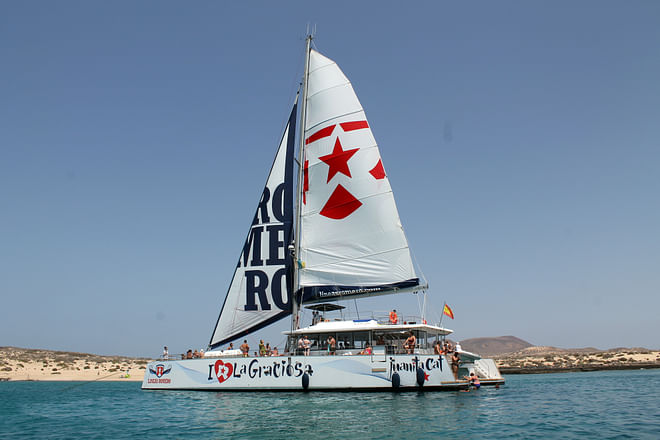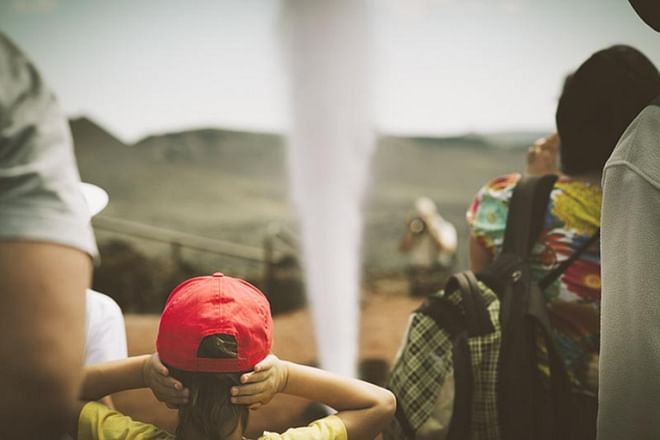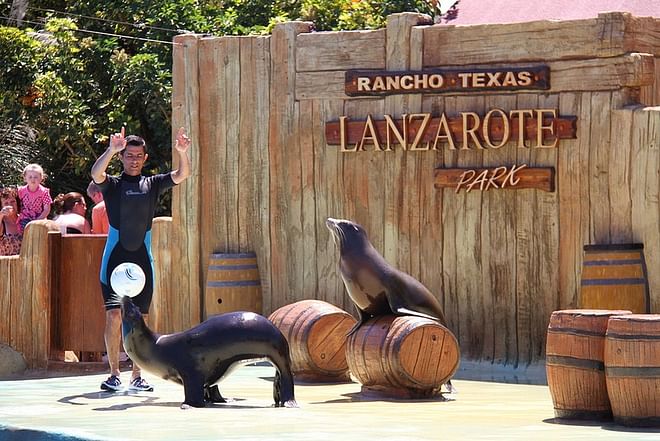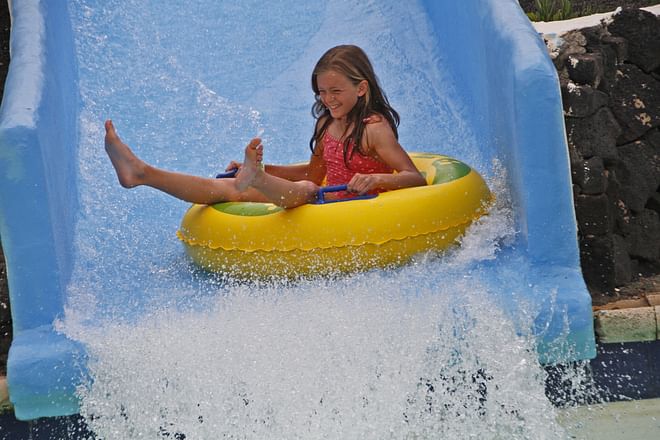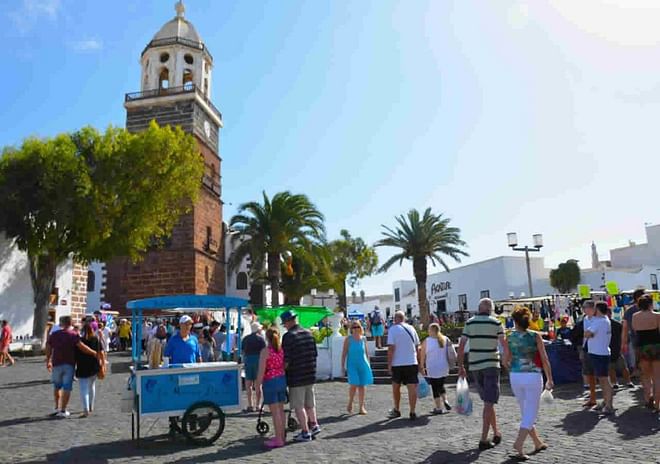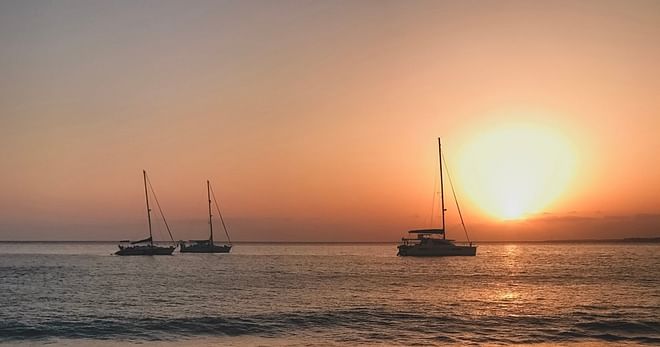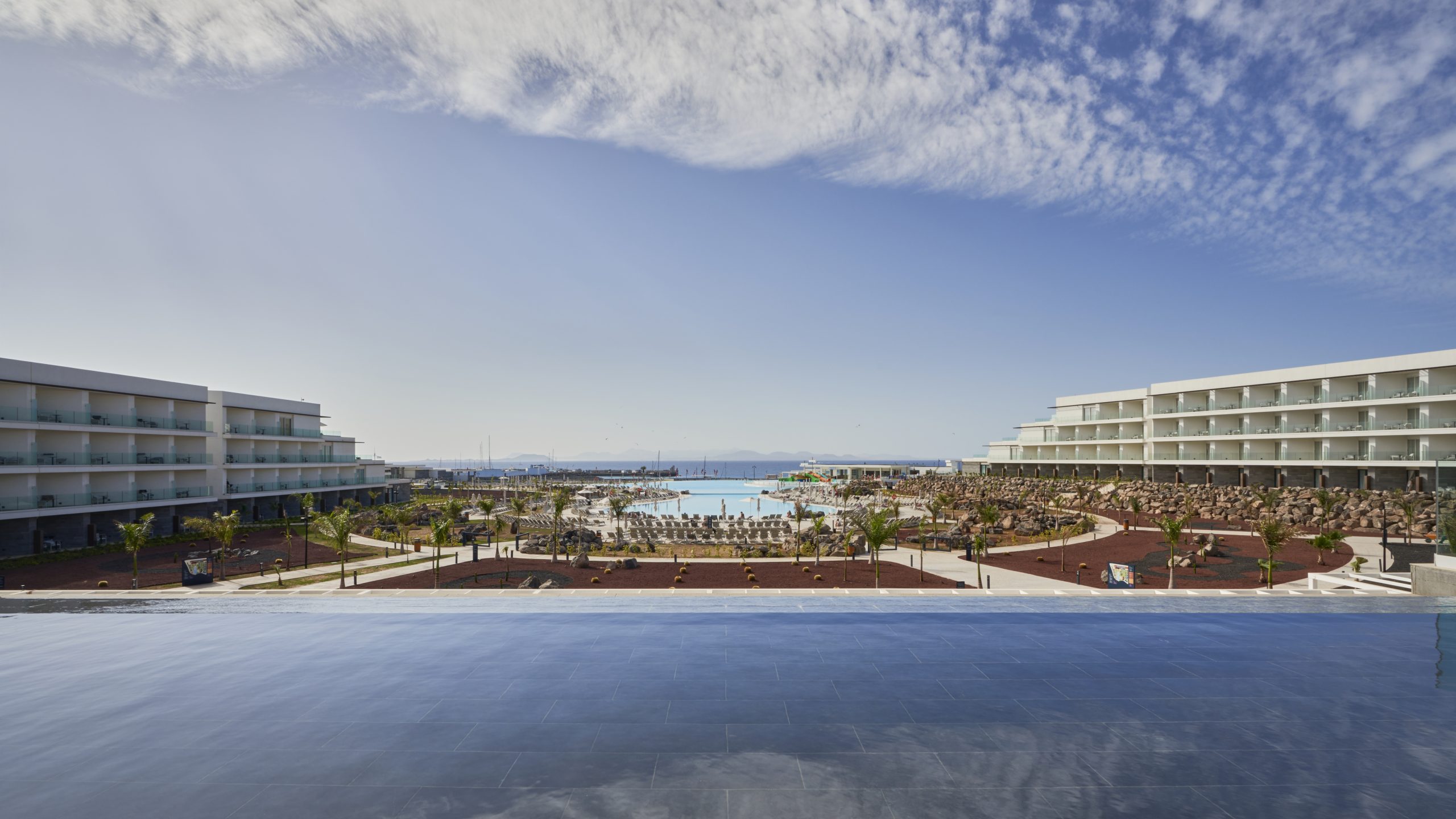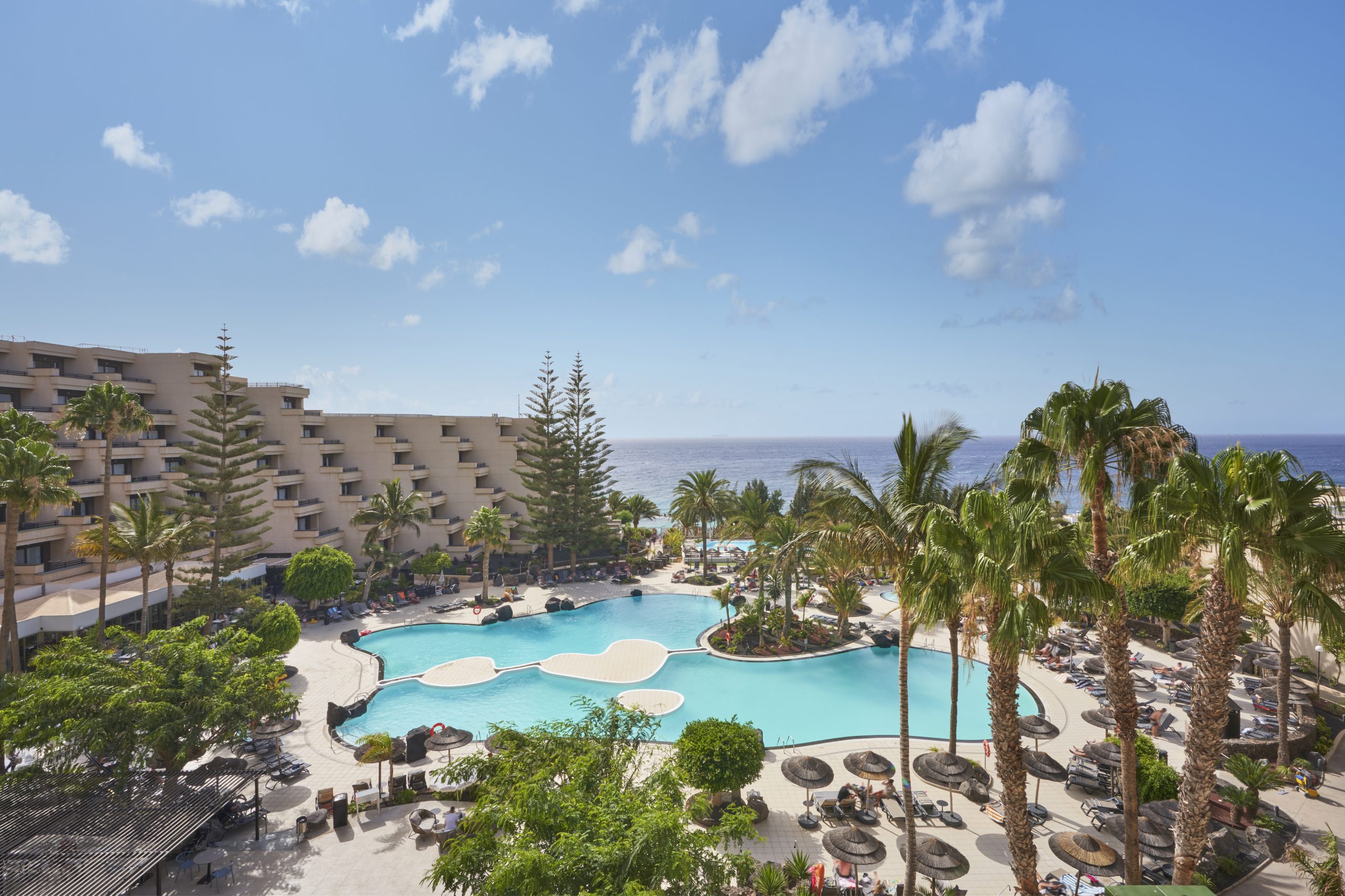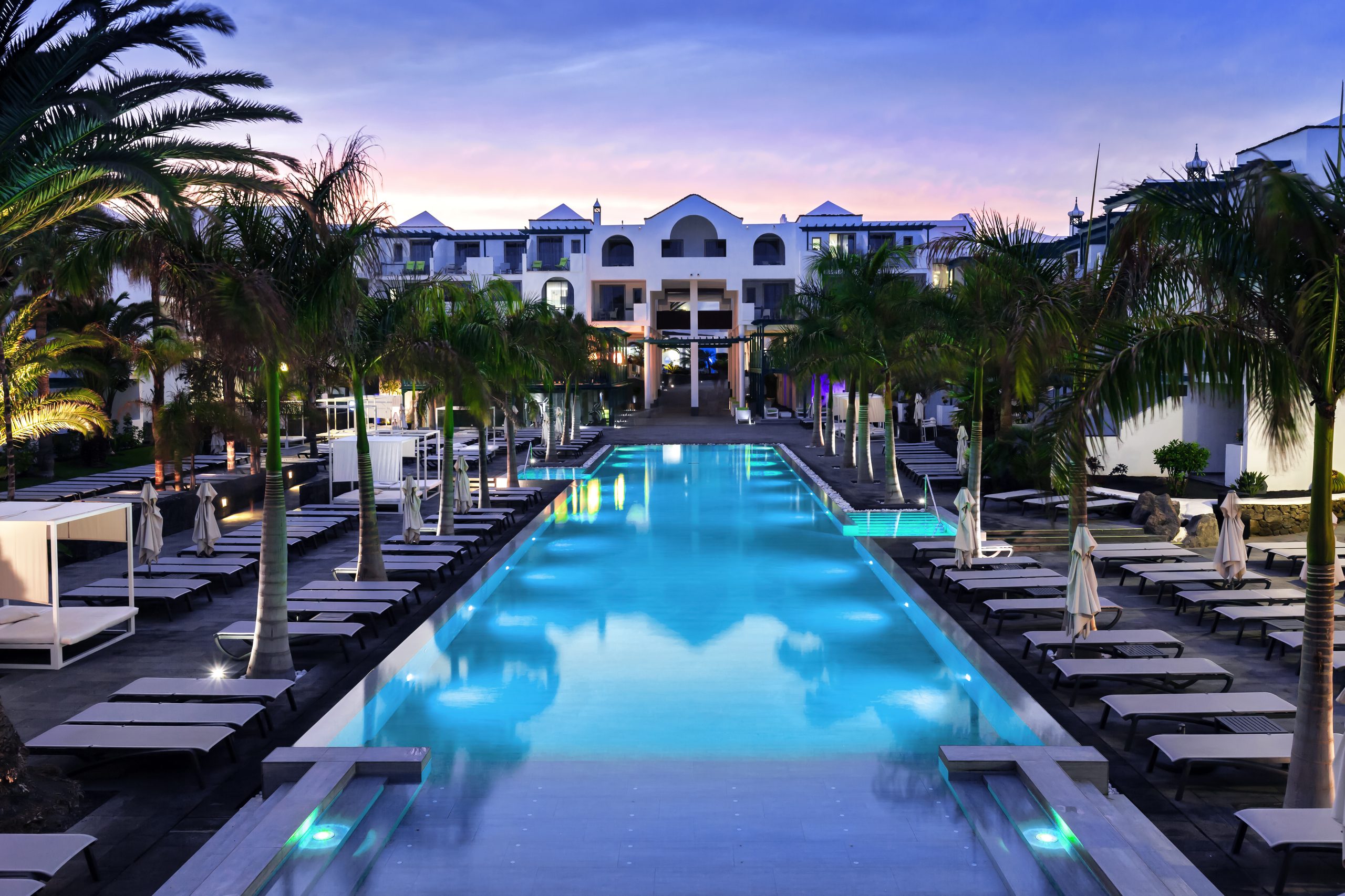On the east coast of Lanzarote, just eight kilometres away from the island’s capital, is the tourist resort of Costa Teguise. A prime example of the urban development boom that the island underwent in the mid ‘70s, the town is, together with Puerto del Carmen and Playa Blanca, one of the three largest tourist resorts in Lanzarote. The ubiquitous Canarian artist César Manrique was involved in its design and, as he worried about the sustainability of the burgeoning tourism industry, went to great lengths to include identifying characteristics of old Lanzarote. Around the so-called Pueblo Marinero—Manrique’s tribute to traditional Canarian architecture—are an array of open spaces, luxury hotels and housing developments reminiscent of the extravagant ‘70s. In addition to the four unspoilt beaches that dot the coastline, a golf course, a water park and a huge aquarium complete Costa Teguise’s extensive and varied recreational options.
The origins of Costa Teguise: when all this was fields
Despite the fact that Costa Teguise is the area’s official name, if you ask a local it is likely that they will refer to it as Río Tinto. This is because, after purchasing an enormous estate, Explosivos Río Tinto S.A was the first development company that began to build, in the mid ’70, the tourist resort that we know today. Before the luxury housing developments and hotels, Costa Teguise was the site of countless hectares of uncultivated land for cattle grazing and sporadic wheat and barley crops, where remains of indigenous ceramics were occasionally discovered in the subsoil.
The spirit of the ‘70s can still be felt in some hotels, innumerable apartments and, of course, Manrique’s famous Pueblo Marinero, whose homonymous main square is now lined with bars and restaurants and hosts various markets. Another vestige that is almost as old is the Royal Residence of La Mareta, situated on the seafront on the outskirts of Costa Teguise. Dating back to the late ‘70s, this lavish building originally belonged to King Hussein I of Jordan, who then gave it to King Juan Carlos I as a gift. Today it is part of Canarian heritage, with diverse personalities such as the former leader of the Soviet Union Mijaíl Gorbachov and former Spanish presidents José María Aznar and José Luis Rodríguez Zapatero having stayed there over the years.
Today over 7,000 people live in Costa Teguise, making it the most populated hub in the municipality of Teguise. Amid whitewashed walls, gleaming green woodwork and delightful gardens, a mix of nationalities—made up of both natives, mainlanders and Europeans attracted by the pleasant climate—live side by side 365 days a year.
Leisure on demand in Costa Teguise
Costa Teguise has made a name for itself as one of the main tourist resorts in Lanzarote, which it has done thanks to the huge range of recreational activities on offer. Some of its most common sights are groups of children running through the spacious plazas of Pueblo Marinero while their parents chat away, beer in hand, at one of the many bar terraces in the area.
However, if what you’re after is something a little more engaging, you can also visit Aquapark Costa Teguise, the largest water park in Lanzarote, which boasts a 10D cinema—ten because it adds to the cinematographic experience with sensory effects, such as water jets and puffs of air on your neck—and indoor paintball.
If you want to go deep under water without actually getting wet, children and adults alike will adore the Aquarium Lanzarote, the largest of its kind on the island, and just a few steps away from the heart of the resort. Exploring its 33 aquariums and 3 touchpools, which are home to hundreds of species, is an amazing way to pass the time while learning about the island’s sea life. The space also boasts a rubbish tank, which recreates the current conditions of some areas along Lanzarote’s coastline so that environmental awareness also forms part of this submarine exploration.
Beaches, and the wide range of activities that they offer, are the area’s other great attraction. Las Cucharas beach is the largest and the only one with fine golden sand. Windsurfing schools are plentiful here due to its ideal location for practising the sport. Almost adjacent to it, Los Charcos beach boasts white sand and a reputation that rivals Costa Teguise’s most popular beach. El Jablillo beach is the smallest and most tranquil of the beaches of Costa Teguise, mainly due to some breakwaters that form a natural pool around the beach during low tide. Its location is perfect for snorkelling in the surrounding waters. Finally, Bastián beach is the closest to the capital, Arrecife, and is seemingly stained black by the presence of volcanic stone in its sand.
Volcanic craters with views of the sea
Much in the same way as César Manrique’s philosophy defended the integration of the built environment into the rural landscape, in addition to in its centre, Costa Teguise’s sights are also found in its immediate surroundings. Once you’ve explored its coastal side, it’s time to delve inland, where you will no doubt be seduced by the volcanic peaks of the Tahíche, Tinaguache, Corona and Téjida mountains.
Located in the surrounding area of the resort, an ascent up these ancient volcanic calderas reveals natural balconies with views of the Atlantic. Corona and Tinaguache are the closest, and their moderate altitude of under 230 metres make them accessible for almost anyone. Both the russet colour of their rock and the trade winds that blow along their cliffs are a constant fixture on the climb. As are the stunning panoramic views that await at their summits, from which, Costa Teguise landmarks, such as the golf course and Pueblo Marinero, the cruise ships in the port of Puerto Naos and even the old capital of Teguise and its windmills in the inner part of the island, are perfectly distinguishable.

























































